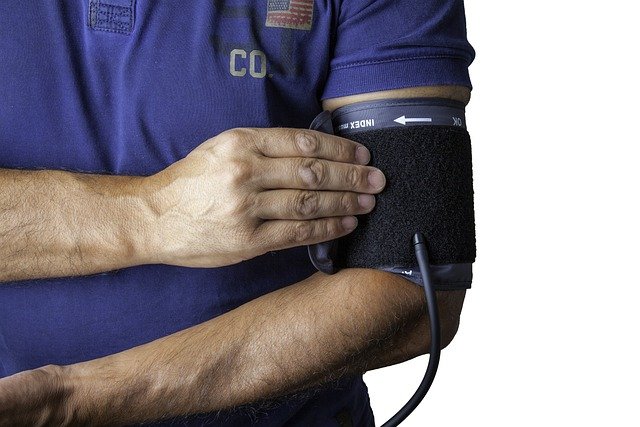Coordinating Follow-up Care and Long-term Monitoring After Treatment
Effective follow-up care after cancer treatment involves structured monitoring, symptom management, and coordination among specialists. This article outlines models of ongoing surveillance, how diagnostic tests and telemedicine support survivorship, and the roles of multidisciplinary teams in long-term care planning.

Effective follow-up care after cancer treatment requires organized planning, clear communication, and a focus on long-term health. Patients often move from active treatment into a monitoring phase that tracks recurrence risk, late effects of treatment, and overall well-being. This period typically combines scheduled clinical visits, imaging or laboratory surveillance, rehabilitation services, and psychosocial support. Coordinating these elements reduces fragmentation and helps patients navigate survivorship, while ensuring that changes in health are identified early and managed by appropriate specialists.
This article is for informational purposes only and should not be considered medical advice. Please consult a qualified healthcare professional for personalized guidance and treatment.
What does oncology-led follow-up involve?
Oncology-led follow-up centers on periodic evaluations by medical oncology teams who review symptoms, physical exam findings, and test results. During visits the team may assess recovery from treatments such as chemotherapy, radiation, or surgery, review surveillance plans, and coordinate referrals to subspecialists. Documentation of treatment history, summary letters for primary care, and a survivorship care plan help clarify responsibilities. Clear timelines for appointments and communication pathways between hospital specialists and local services support continuity and reduce missed opportunities for early detection of recurrence or complications.
How are radiation and chemotherapy effects monitored?
Monitoring after radiation and chemotherapy targets both disease status and treatment-related toxicity. Surveillance can include blood tests, imaging, functional assessments, and patient-reported outcome measures to detect organ-specific late effects. For radiation, clinicians may monitor skin, lung, cardiac, or endocrine function depending on the field treated. For chemotherapy, surveillance often tracks hematologic parameters, renal and hepatic function, and neurocognitive or cardiologic effects. Long-term records enable clinicians to compare trends over time and to tailor surveillance intensity based on prior exposures and individual risk factors.
When are immunotherapy and precision medicine considered?
Immunotherapy follow-up focuses on recognizing immune-related adverse events and assessing durable responses. Patients require education about symptoms that may arise weeks to months after treatment, and providers may use laboratory markers or imaging to distinguish inflammation from progression. Precision medicine and genomics inform follow-up by clarifying recurrence risk and identifying targeted surveillance strategies; genomic results from pathology or biopsies can guide periodic testing or eligibility for molecularly guided clinical trials. Coordination with molecular tumor boards or genomics specialists helps translate results into practical monitoring plans.
What role do screening, diagnostics, pathology, and biopsy play?
Screening and diagnostic tools are central to long-term monitoring. Scheduled imaging, tumor markers, and structured screening for second cancers are selected based on the primary diagnosis and treatment history. Pathology and biopsy remain definitive when recurrent disease is suspected, and repeat tissue sampling can inform treatment choices if molecular characteristics change. Diagnostics also include functional tests and specialized labs; multidisciplinary review of results ensures appropriate interpretation and follow-up action, and local services can provide many of these tests close to the patient’s home.
How are survivorship, palliative, and multidisciplinary needs met?
Survivorship care addresses physical rehabilitation, psychosocial health, vocational concerns, and chronic symptom management. Palliative care teams contribute early by managing complex symptoms and supporting advance care planning, not only end-of-life care. Multidisciplinary coordination brings together oncology, surgery, radiation, palliative care, physiotherapy, nutrition, and mental health professionals to create individualized care plans. Regular team meetings or case conferences, shared electronic records, and designated care coordinators improve alignment between specialty services and primary care for long-term needs.
Can telemedicine and clinical trials support long-term monitoring?
Telemedicine extends access to follow-up, enabling virtual symptom checks, medication reviews, and triage of new concerns without travel. Remote monitoring tools and patient-reported outcome platforms can flag issues between scheduled visits. Clinical trials provide structured follow-up protocols and may offer surveillance aligned with emerging therapies, though eligibility depends on prior treatments and clinical criteria. Integrating telemedicine with in-person diagnostics and ensuring data sharing between trial teams and local services strengthens ongoing monitoring while maintaining patient convenience.
Coordinating follow-up care and long-term monitoring after treatment is an evolving process that balances standardized surveillance with individualized risk assessment. Effective models combine oncology leadership, multispecialty collaboration, clear communication with primary care, and use of diagnostics, genomics, and telehealth to detect problems early and support quality of life. Ongoing review of survivorship plans ensures that monitoring adapts as needs change and that patients maintain access to appropriate local services and specialist expertise.






